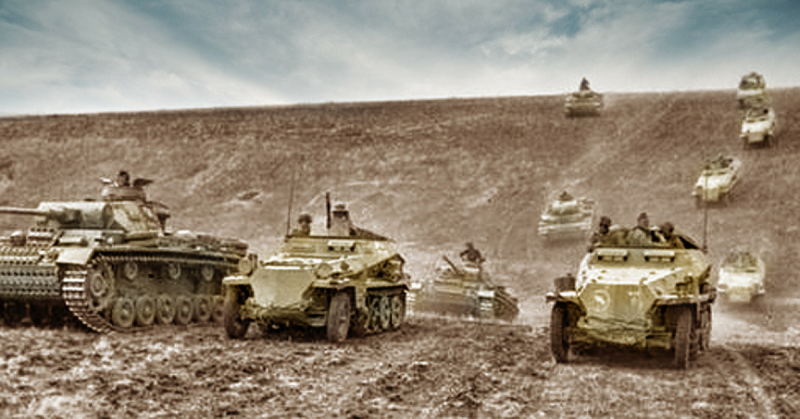On the 1st of September 1939, Germany launched one of the most dramatic military campaigns of the 20th century. Troops poured across the border into Poland, smashing the defenders. In doing so, they seemed to prove the power of a new form of aggressive tactics, the blitzkrieg.
The Blitzkrieg Principle
Blitzkrieg tactics were the natural continuation of German doctrine from the late First World War and of a broader school of inter war military thinking. During the final year of the First World War, the Germans had broken the stalemate on the Western Front. This was achieved by creating hard hitting, fast moving formations of elite stormtroopers.
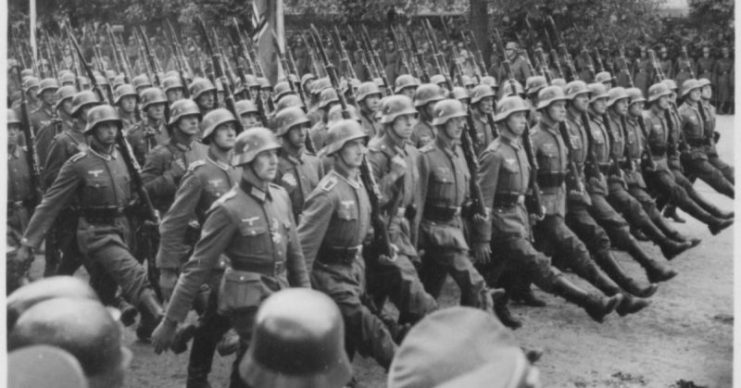
They broke into the Allied trench lines through a combination of superior equipment and elite soldiers. Rather than consolidate the gains they made, they kept moving, maintaining the momentum and leaving others to capitalize upon their success. This kept the offense moving and prevented the enemy from regrouping, leading to huge gains.
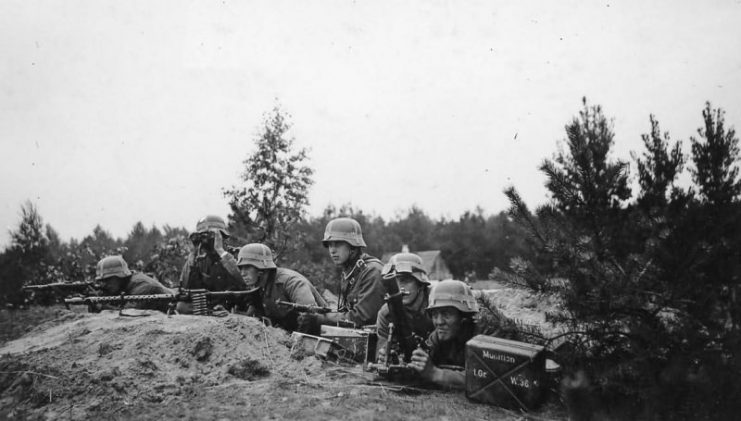
Between the wars, several military thinkers in both Britain and Germany explored the potential provided by tanks. Men like B. H. Liddell Hart and Heinz Guderian believed that tanks leading armored assaults could smash holes in enemy lines, leaving other forces to follow through. Here again, there seemed to be an opportunity for a hard hitting, fast moving approach to the fight.
The result was the German blitzkrieg doctrine.
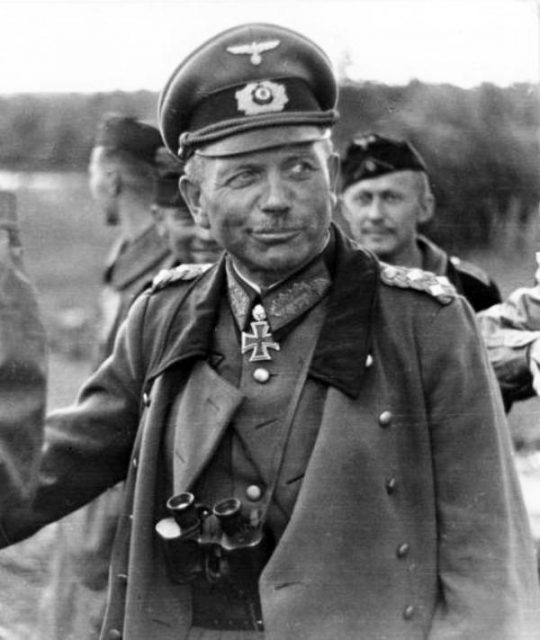
Vulnerable Poland
German armed forces were carefully cultivated to prepare them for this form of warfare. Under Hitler, Germany invested heavily in tanks and mechanized infantry as well as the artillery and ground attack aircraft that would soften the enemy up before a breakthrough.
But the success of the blitzkrieg in Poland was as much a result of Polish vulnerability as it was of German strength.
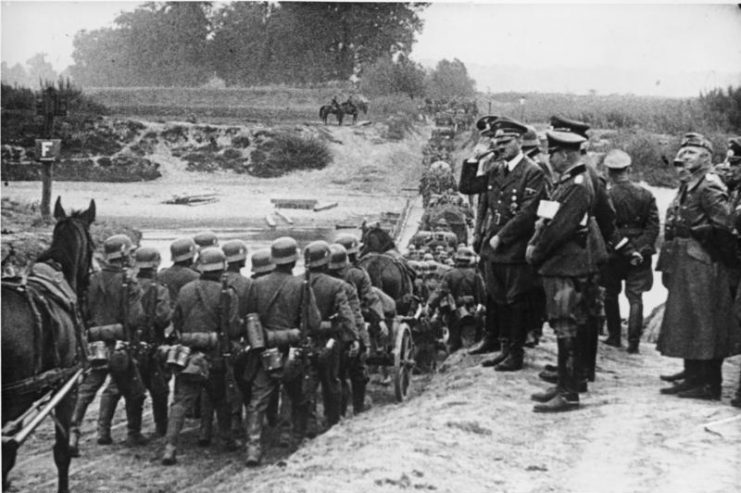
Western Poland included a lot of wide, flat land, ideal for a fast advance. Coming at the end of the summer, the invasion occurred while the ground was hard and dry, adding to the ease with which the German troops advanced.
The Polish armed forces, though hardy and courageous, were badly suited to facing these new German tactics.
The Polish army was predominantly made up of slow moving infantry, unable to respond to the swift strikes of the Germans. Their equipment was less modern than that of the well funded and technologically innovative Germans. Of the faster moving Polish units, many were cavalry rather than tanks, and so extremely vulnerable to modern weapons.
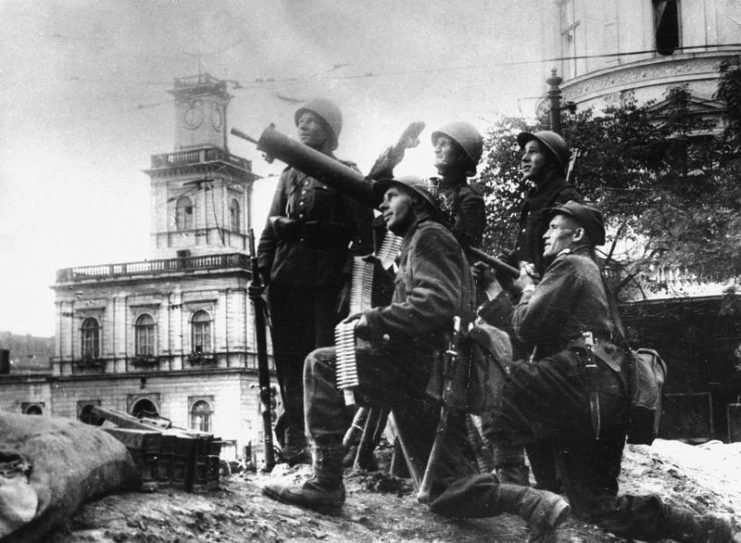
In the skies, the Poles were equally outmatched. Their best fighters were P.Z.L. P.11s, which had a top speed of 240mph, compared with the 350mph of the German Messerschmitt Bf109E. 842 Polish planes faced 4,700 German aircraft. The structure of the Polish armed forces meant that fighter cover was poorly coordinated so that the resources they had weren’t well deployed.
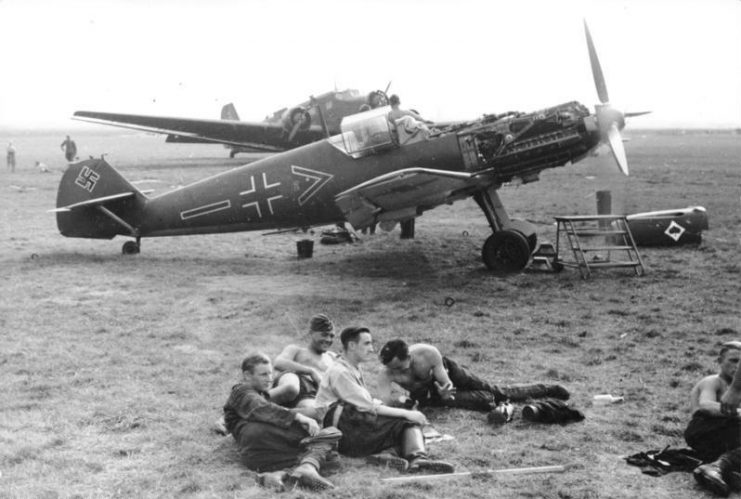
The War Begins
At 0445 on the 1st of September, the invasion began.
It was a textbook execution of Blitzkrieg. For the first hour, Luftwaffe bombers and fighters hit Polish positions, taking out air defenses, troop concentrations, and transport networks. An hour later, they were followed by the ground advance. While other troops held the line, armored formations punched through the weakened Polish forces. Infantry and mobile artillery followed up behind them.
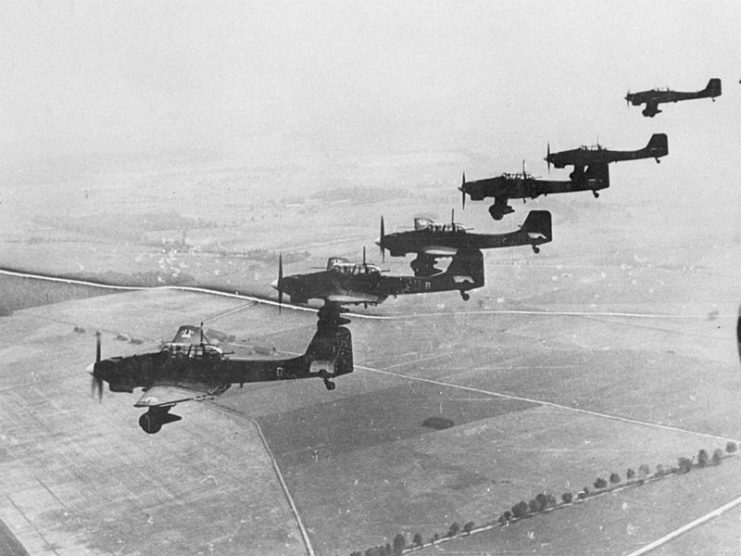
The speed of these advances allowed the columns to achieve their strategic objectives. Entire formations of the Polish army were isolated and then surrounded. Cut off from each other, from support, and even from commanders, they struggled to organize a fight back. Meanwhile, the Germans were in their rear, smashing supply lines, seizing cities and transport networks.
Within days, the Germans were fifty miles through the Polish lines, then a hundred miles. The speed and ferocity of Blitzkrieg were paying off.
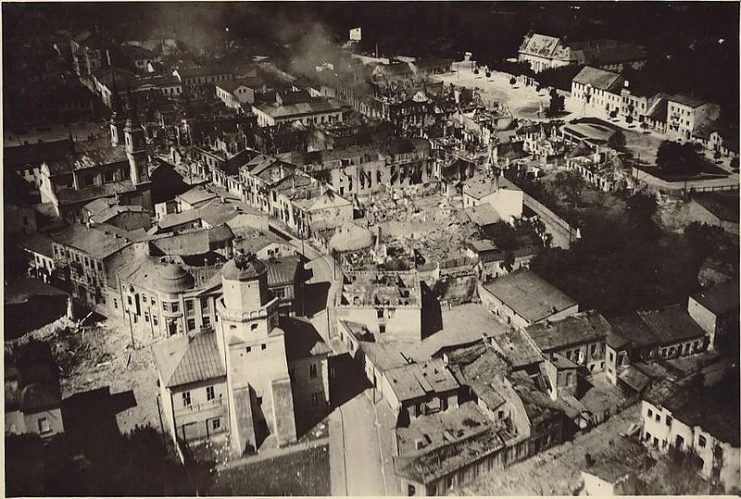
It’s said that in war no plan survives contact with the enemy, and so the Germans were almost as surprised as the Poles to find that their plan remained intact. They didn’t even know how many of the Poles they had managed to cut off because the dust raised by those forces was blocking the view for aerial reconnaissance.
Proof of the Principle?
On the 9th of September, the Poles launched a counterattack at the Bzura river, hoping to make the most of German activity in the center. But the German Army Group South moved to counter this, channeling the Poles into a battle on a narrow front in which they were once again encircled.
Meanwhile, Guderian’s column was pushing hard into the east. Their capture of almost all of Brest Litovsk by the 14th of September left the Germans securely placed in the Polish rear. Even before the Russians invaded eastern Poland on the 17th, the outcome of the war was clear.
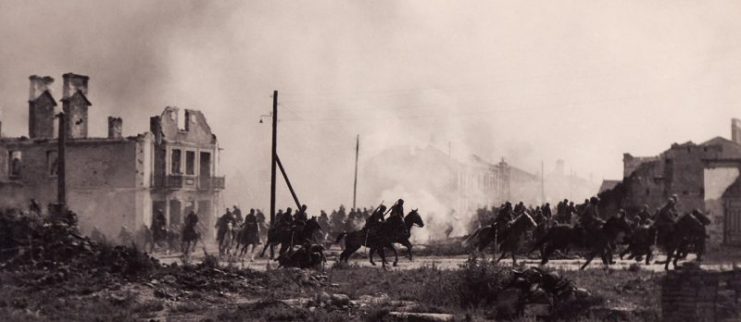
As tens of thousands of Polish servicemen fled across the border, determined to keep up the fight from abroad, the world began acknowledging the power of blitzkrieg.
Did the invasion of Poland really prove that blitzkrieg tactics were so very powerful? The Polish army was out of date compared with German fighting forces. As the rest of the war would prove, dominance in the skies was a huge part in winning a modern war. Even with other tactics, the Germans would almost certainly have won.
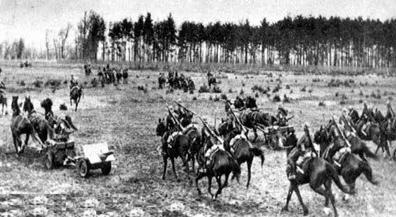
Blitzkrieg triumphed again in France the following year, seeming to set the seal on its supremacy. But later efforts were less effective. When countered with modern tanks and an effective defensive line, German armored attacks could be repeatedly stopped. The Germans themselves would prove the power of defensive tactics in Normandy before launching a failed blitzkrieg style offensive in the Battle of the Bulge.
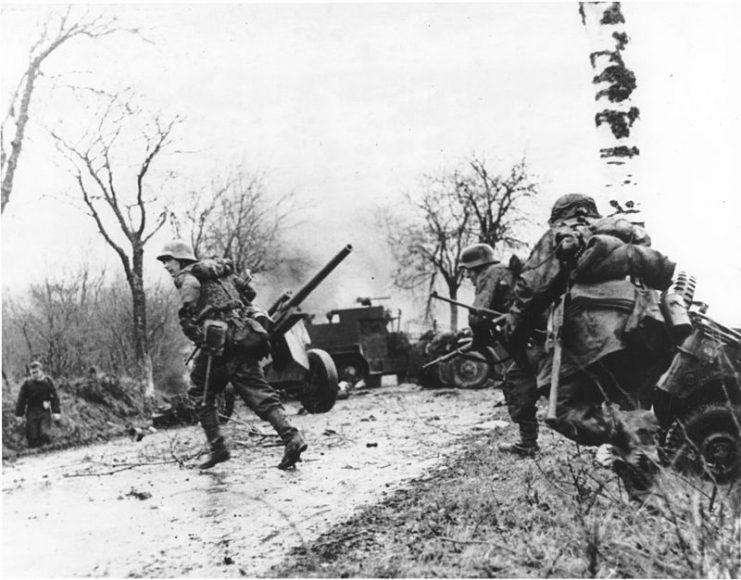
The invasion of Poland showed that, in the right circumstances, these tank tactics could work. But it also created an exaggerated image of their effectiveness, one that shaped the way the war was fought and that has colored depictions of the Second World War ever since.
